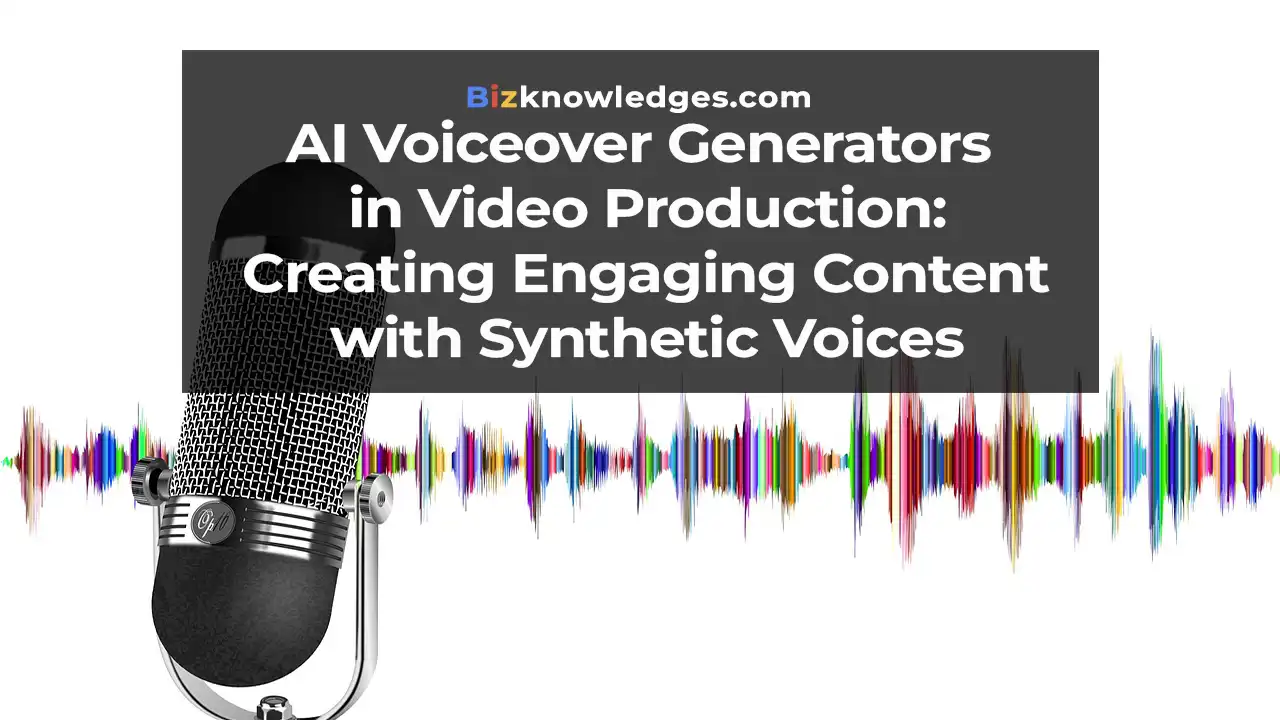AI Voiceover Generators in Video Production: Creating Engaging Content with Synthetic Voices

The emergence of AI technology has transformed various sectors, with video production being no different. AI voiceover generators, a major advancement in artificial intelligence, are now a crucial resource for developing captivating and lively content. These artificial voices are reshaping the video production process, providing distinct advantages that conventional approaches cannot replicate.
Understanding AI Voiceover Technology
AI voiceover technology utilizes artificial intelligence to produce speech that closely resembles human speech. This technology relies on advanced machine learning algorithms and large datasets of recorded human speech. By analyzing these datasets, AI systems can learn the nuances of human speech, including tone, pitch, and rhythm, to produce realistic voiceovers.
How AI Voiceover Generators Work
AI voiceover generators work by converting text into spoken words. The process involves several steps:
Text Input: The user provides the text that needs to be spoken.
Text Analysis: The AI system analyzes the text to understand its structure, grammar, and context.
Voice Generation: Using the analyzed data, the AI synthesizes a voiceover that mimics human speech patterns.
Output: The final voiceover is produced, ready to be integrated into video content.
Advantages of Using AI Voiceover Generators
Cost-Effectiveness
Traditional voiceover production can be expensive, involving hiring voice actors, booking studio time, and editing. AI voiceover generators eliminate these costs, providing a more affordable alternative without compromising on quality. Plus, finding a video editor for free can further reduce your expenses, making the entire production process more cost-effective.
Time Efficiency
AI voiceover generators can produce voiceovers in a fraction of the time it takes to create them traditionally. This rapid turnaround is particularly beneficial for projects with tight deadlines.
Consistency in Voice Quality
One of the key advantages of AI voiceovers is the consistency they offer. Unlike human voice actors, who may have variations in their performance, AI-generated voices remain consistent throughout the production process.
Applications in Video Production
Marketing Videos
In marketing, clear and engaging voiceovers are crucial for conveying messages effectively. AI voiceover generators allow marketers to produce high-quality voiceovers quickly, enhancing their ability to create impactful ads and promotional videos.
Educational Content
Educational videos benefit significantly from AI voiceovers. These generators can produce clear, concise, and engaging narrations, making complex information more accessible and understandable for learners.
Entertainment and Media
AI voiceovers are also making their mark in the entertainment industry. From animation to video games, synthetic voices are used to create characters and narrate stories, adding a new dimension to digital media.
Creating Engaging Content with AI Voices
Personalization and Customization
One of the standout features of an AI voiceover generator is its ability to personalize and customize voices. Users can adjust tone, pitch, and speaking style to suit their specific needs, creating a unique voice that aligns with their brand or project.
Enhancing Viewer Engagement
AI-generated voices can be tailored to captivate audiences. By fine-tuning the emotional tone and delivery, creators can produce voiceovers that resonate more deeply with viewers, enhancing engagement and retention.
Case Studies of Successful Use
Many companies have successfully integrated AI voiceovers into their video production workflows. For example, an e-learning platform used AI-generated voices to create engaging tutorials, resulting in a significant increase in user satisfaction and course completion rates.
Challenges and Limitations
Ethical Considerations
The use of AI voiceovers raises several ethical concerns. Issues such as the potential for misuse, the impact on jobs in the voiceover industry, and the authenticity of synthetic voices need to be carefully considered.
Limitations in Emotion and Expression
While AI voiceovers have shown improvement, they still struggle to convey the emotional intricacies and subtle nuances that human speech effortlessly captures. This limitation has the potential to affect the overall effectiveness of voiceovers in emotionally driven content.
Technological Barriers
Although there have been technological advancements, there are still obstacles that need to be addressed. Challenges such as background noise, pronunciation accuracy, and the capability to handle complex scripts are all areas in which AI voiceovers can make further improvements.
Future of AI Voiceover Generators
Potential Advancements
The future of AI voiceover generators looks promising, with ongoing research aimed at making synthetic voices even more lifelike. Improvements in emotional expression, accent adaptation, and real-time voice generation are on the horizon.
Integration with Other AI Technologies
AI voiceover generators are expected to integrate seamlessly with other AI technologies, such as natural language processing and facial recognition. This integration will enable more sophisticated and interactive video content.
Predictions for Industry Impact
As AI voiceover technology continues to evolve, its impact on the video production industry will grow. We can expect more widespread adoption, leading to more innovative and engaging content across various media platforms.
Conclusion
AI voiceover generators are revolutionizing video production by offering cost-effective, time-efficient, and consistent voiceover solutions. While challenges remain, the potential for future advancements makes this technology a game-changer in creating engaging content. As AI progresses, its involvement in video production is poised to grow, offering new prospects for both creators and audiences.
